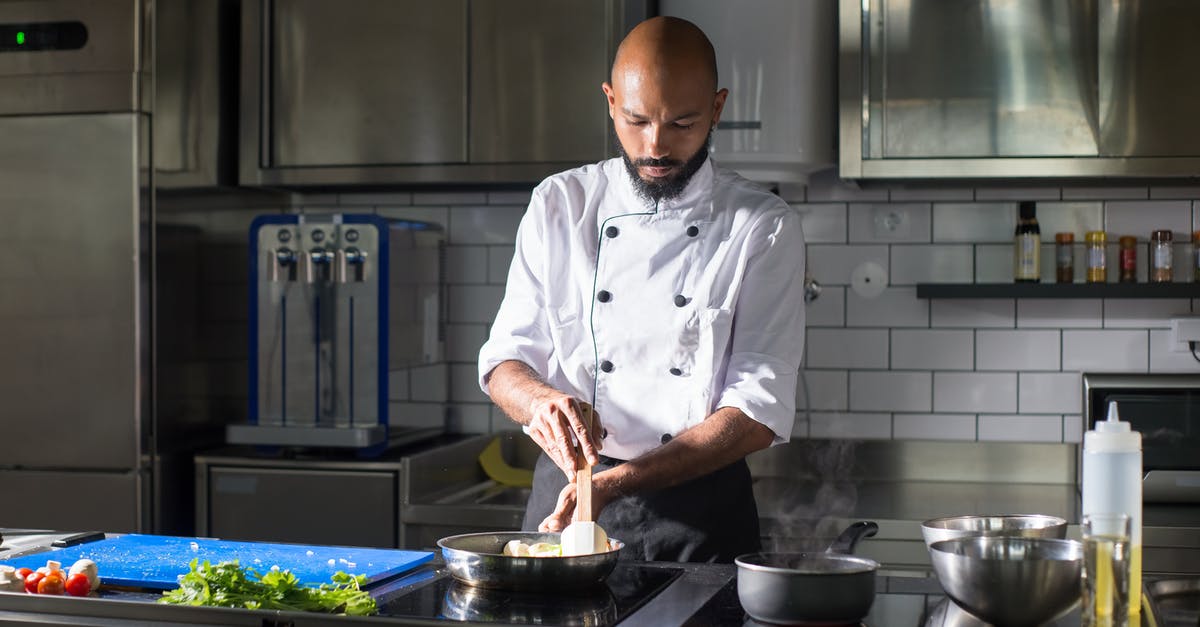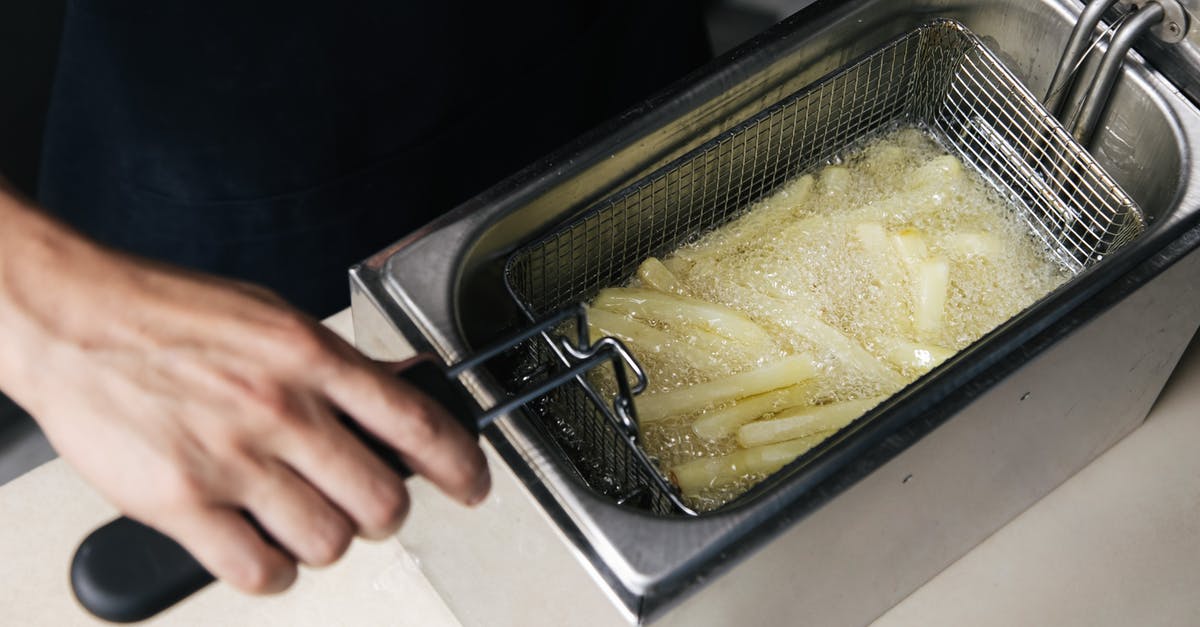Once a month cooking

I've heard of "once a month cooking" or "freezer cooking," where you basically spend a day cooking and fill your freezer with the next month's worth of food. This could especially come in handy when preparing for a baby. (Take-out food gets boring REALLY fast.)
What are some tips and/or resources for once a month cooking?
Edit: I suppose this need not be for cooking for an entire month per se. The idea is cooking in bulk ahead of time.
Best Answer
For years I did the 'once a week' cooking, which has the advantage of not requiring much freezer space (which I didn't have, with my under-counter apartment fridge). Part of the trick was cooking something that could be used multiple ways with minimal effort -- a blend of ground beef, onions and peppers could be turned into a pasta sauce, mexican food, etc.
These days, I still don't go quite to the extreme you're talking about, but I will do things like make way more than I know I'm going to use right away, and freeze the rest -- chili, black bean soup, stock, lasagna, etc. When chicken's on sale, I'll poach a large batch, shred it, then freeze it in zip top freezer bags. I can turn it into chicken tacos in a few minutes -- thaw with some water in a pan, add spices, and cook 'til the water's mostly boiled off.
Now, as in the past few months I've made a lot of meals for my brother's family while his wife was pregnant with twins, some considerations:
- containers : you're going to need a lot for a month, especially if you're preparing sides and such. As I had a membership to Restaurant Depot, I was able to get 2 1/4 lb rectangular aluminum containers normally used for carryout packaging. Of course, I had to get a case of 400 ... if you know a restaurant that uses 'em, you might ask if they'll sell you a few dozen. You want something that seals tightly, and you'll want to fill them so there's not much air space left in them.
- labeling : all containers should be marked with what's in them (if you have to open to look, it's not going to last very long), the date it was made, and possibly reheating instructions and/or ingredient lists (see below). My mom would use masking tape to label things, I just got the lids that had paper on one side, aluminum on the other.
- variety : my sister-in-law started getting heartburn from some ingredients (tomatoes, onions), which meant that the items I had made didn't work out so well. (She was fine after the pregnancy, though, and made use of the dinners then).
One thing I've heard about, but never done myself, is people who have a dinner exchange -- sort of like a cookie exchange for the holidays -- everyone makes up a number of casseroles, or whatever, and then people meet up, and everyone takes one of everyone else's items home. So, if you're thinking about doing this, and know of other people who might want to, also, you might be able to get some extra variety. (of course, if you don't like their cooking, it might not work out so well).
... and one last thought -- it won't help on the baby preparation front, but if I were going to do this as a regular thing, I'd consider making one or two recipes, with batches for 4-5 dinners each ... so I was staggering things, and not having to spend a whole day (or weekend) trying to make enough different things to have variety for a whole month.
Pictures about "Once a month cooking"



Is once a month meals worth it?
Once a Month Meal's RecipesThis is not very important overall because it is hard to cook that many recipes. Most people prefer to stick to the recipes they love. You really only need 100 or 200 recipes that have some variety. The taste of the recipes that are offered is the most important thing to consider.What can I cook for a month?
And here are a couple of simple recipes to get your once a month cooking started:- Slow cooker beef goulash.
- Baked feta and tomato pasta.
- Slow cooker pulled pork.
- Cheesy Taco Potato Bake.
- Vietnamese fish sauce chicken wings.
- Tuna mornay.
- Garlic chicken balls (Kiev balls)
- Baked frittata.
Can you batch cook for a month?
Invest some time cooking one weekend and have healthy meals for a month! Imagine being able to have dinner readily available every night for a month. If you have some extra time, you can batch cook and freeze a month's worth of meals!How do I plan food for a month?
How to Make a Monthly Meal PlanThe Easiest Way to Make Freezer Meals | Cook Once and Eat for a MONTH
More answers regarding once a month cooking
Answer 2
I kind of combine Joe's answer with J Wynia's at my house. We have a standing freezer in the garage, so luckily I have room for a lot of stuff :) I've always been a strategic shopper (chicken breast is $1.49 this week? you better believe I'm buying 20 lbs), so the outside freezer has already paid for itself many times over. We actually got ours from a friend who was going to put his on Craigslist, so it was only $100.
When I have time to make a full meal during the week or on the weekend, I make 3-4x what I need. If I'm making lasagna, I'll make 3 trays. If I'm making ground beef for tacos or sloppy joes, I'll make 4 lbs. When I caramelize onions, I do a 5lb bag. Chili and any soups or stews, an entire crock-pot or dutch oven's worth. Depending on what I have on hand, I'll either vacuum seal them or put them in a freezer bag or ziploc container, dated and labeled of course (it's amazing how difficult some things can be to identify something when frozen). If you don't have a slow cooker (crock pot) get one! You can just throw a bunch of stuff in it and with minimal hassle, you've got a large meal with a lot of leftovers.
If I make 3 extra meals, twice a week, for a month, I've got 24 days worth of meals ready. That's my "rolling" stock of full meals.
Then on a Saturday or Sunday when I have the time, I'll grill 10 chicken breasts, make 2 london broils, 2 pork tenderloins - whatever I might be in the mood for that week. The important thing to remember is, if you're going to make 1 of something, how much harder is it going to be to make 5 or 10? You already have the stuff out and the kitchen in use!
At all times, I have a stock of sliced and diced onions and/or shallots, bell peppers, jalapenos, sliced or minced garlic, and a bag of stock (in ice cube form) in my freezer for impromptu meals.
So, if I get an especially difficult work day and get home late (or I'm just feeling lazy), I'll use the pre-made meals; on a normal day I'll use some combination of these "parts".
Vacuum sealing is great, because if you forget to defrost something the night before, you can throw the entire bag in a pot of boiling water on the stove and have it hot quickly, then finish it off in a pan depending on what it is (if desired). Certain things can be hot and delicious just by boiling, such as lasagna and soup.
Some real-world examples from my freezer right now or in the recent past:
- Hamburger meat - tacos, homemade hamburger helper, sloppy joes. I have a few pounds of cooked taco meat and sloppy joe meat frozen already made, and some plain hamburger meat cooked for hamburger helper or whatever else I may think of
- Burgers - a supply of ground sirloin/chuck burgers, and a supply of ground turkey burgers. I also prep the patties and freeze uncooked between layers of freezer paper for a "fresh" grilling since they're fast and easy
- Chili - a few varieties, each made in the crockpot on low for 8 hours
- Pasta sauce - extremely easy (and relatively cheap)
- London Broil - cooked and cut into thin strips, for sandwiches, wraps, salads, stir-fry, or just by themselves cold or warm.
- Chicken - grilled, same use as the London Broil
- Chicken - poached, for chicken salad, chicken tacos, quesadillas, stir fry
- Pork roast - cooked in crock pot with homemade barbecue sauce, then shredded and frozen, for pulled pork sandwiches
- Lasagna - cut into individual servings and vacuum sealed for boiling as mentioned above
- Chicken Parmesan - I usually make this the same day as the lasagna - and eat them together too - but I freeze them separately to grab for lunch on the way to work as well
- Rice and Beans - sometimes I freeze individually, sometimes I mix them together and freeze like that
- Casseroles - casseroles are like magic, they're easy to prepare, they freeze really well, combine a lot of different foods, and often taste better after sitting. Tuna casserole, green bean casserole, chicken pasta casserole, the possibilities here are endless
- Soups - frozen in ziploc containers. As with casseroles you can get a lot of variety here. Often I'll freeze them in ziploc containers, then vacuum seal when solid, so I can use the boiling water method to quickly thaw
- Frozen fruit - this isn't really for meal planning necessarily, but it can definitely help you in a pinch - a quick smoothie in the morning, a healthy snack during the day, or even to help make a sauce or marinade for dinner. I generally have some bananas, sliced strawberries, sliced peaches, blueberries and grapes - plus whatever was in season in the recent past
One other trick is freezing uncooked things with their marinades. If I buy a pork tenderloin, I'll make a quick marinade and freeze it in the bag. Same with fish, london broil, shrimp (unpeeled), chicken breasts - just about anything really. When you take them out to defrost, they'll marinade at the same time.
I was given two great books as gifts last year:
- Fix, Freeze, Feast - no pictures, but a lot of simple recipes, and full instructions on both how to freeze and how to reheat
- Prevention's Low-Fat, Low-Cost Freezer Cookbook - this book is great. Every page has a sidebar with kitchen tips (such as how to freeze herbs), there's an 18 page intro with good info on what and how to freeze in general, and the recipes are split into two groups: For the Freezer, meals you cook then freeze, and From the Freezer, meals that take use of the "parts" you've previously frozen. As a bonus, every recipe includes your basic nutritional info like you'd find on packaged food at the store, as well as an estimated cost per serving!
Finally, I completely agree with Joe's suggestion for the dinner exchange. I actually do a lunch potluck with a buddy at work at least once a week, and we both use our homemade freezer meals instead of cooking something special. Definitely helps break up the monotony of just eating things you cook - you're already used to those!
Answer 3
While we don't generally go a month in advance, we've found a vacuum system to be immensely helpful (we just got a $20 food saver pump and some vacuum bags from Wal-Mart, nothing super fancy).
Then we went to Sam's club (which we had a membership already - side note: if you have a baby get your formula there, the Member's Mark stuff is amazingly cheap and exactly the same as Enfamil, diapers are also pretty cheap) and bought 10 pounds of beef, a bunch of chicken breasts, and some pork chops. We then vacuum sealed it all and froze it.
Whenever we make anything we make roughly 3 times as much as we can eat and vacuum seal the rest. The left overs usually go about a week before they're gone.
Answer 4
What I actually do more of than actual once a XYZ cooking of whole meals is cooking common components in advance.
I will, for instance, dice up a pile of onions, brown hamburger, make shredded pork or chicken, parboil red potatoes, brown onions and garlic in butter, dice and brown chicken breast pieces, etc. and then either freeze or refrigerate those components in individual plastic vacuum packed bags.
Then, when it's time to make dinner, I can mix and match a little more loosely to make meals, but still cut the prep time dramatically. The shredded chicken can quickly become tacos, quesadillas, top a salad, help out a quick soup, etc.
I also make sure to make extra whenever I fire up the grill. There's always a bag of frozen hamburgers and a bag of brats in my freezer, which make for quick lunches, etc. The grill is already hot, so I just make way more than we need and freeze the rest.
Answer 5
Ideas, including canning (which won't take up freezer space):
Answer 6
Think about how you are going to re-heat the food. Some foods reheat fine in the microwave, like soups, stews, and some meats. Others need to be heated in the oven, like pizza. There are vacuum bags that are boilable for pastas and vegetables.
Answer 7
Gumbo is recommended for your once a month cooking. It is a delicious and hearty meal and easy to make. There are many different recipes therefore many different flavors. Plus it freezes well. In fact gumbo gets better with age when frozen.
There is always frozen gumbo and cooked rice in our home freezer. In just a few minutes it can be thawed on your stove top or microwave. The cooked rice will thaw beautifully in the microwave. Toast a little bread and toss a green salad and you will have a wonderful meal in under 30 minutes with very little prep time. Enjoy a glass of wine while the gumbo thaws.
We have it year round but you will especially love it on cold winter days when you get home tired, hungry and need some warmth and comfort.
Answer 8
Casseroles (like boeuf bourguignon) work great for this sort of cooking because you can do the work for a large batch in almost the same time as a small batch, and dividing up what you cook isn't difficult and they reheat beautifully. You can also gain from more bulk buying of meat.
Answer 9
We just had a similar question asked, with the additional restriction of only being able to reheat via a microwave. I had started to answer it, but it was closed before I hit 'submit'. Here was my answer:
Due to the way that microwaves heat things, you're typically better off with rather moist dishes. One dish meals are advantageous, as you can microwave the meal, mix everything, then microwave again, resulting in a more even heating. One dish meals also have the advantage that they're often able to be eaten with a single utensil, reducing cleanup.
As you specifically mention rice, if it's a dish where the rice is typically cooked separately, I put down a layer of rice, then a layer of something with a sauce over top, so the extra liquid soaks into the rice. This works well with stir-fries, curries, etc. It also works well with integrated rice dishes, such as jambalaya, beans & rice, dirty rice, fried rice, paella, or arroz con pollo.
Stews, soups, and similar high-moisture foods also work well in a microwave, but you typically have to stir them two or more times for even heating. They also tend to splatter, which means taking additional precautions by covering the meal while cooking, or being prepared to wipe out the microwave afterwards.
Most casseroles work well, provided that there isn't a specific bready top to it. (eg, chicken pot pie).
Sources: Stack Exchange - This article follows the attribution requirements of Stack Exchange and is licensed under CC BY-SA 3.0.
Images: EKATERINA BOLOVTSOVA, Kampus Production, Ron Lach, Annushka Ahuja
